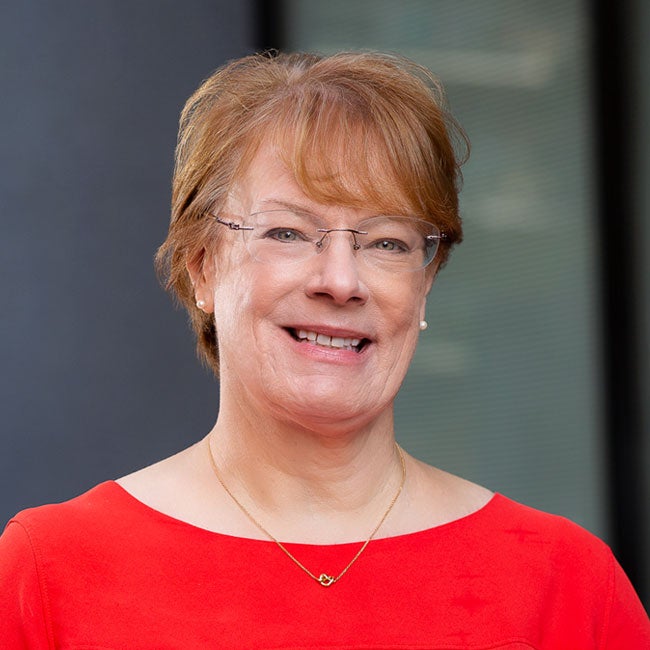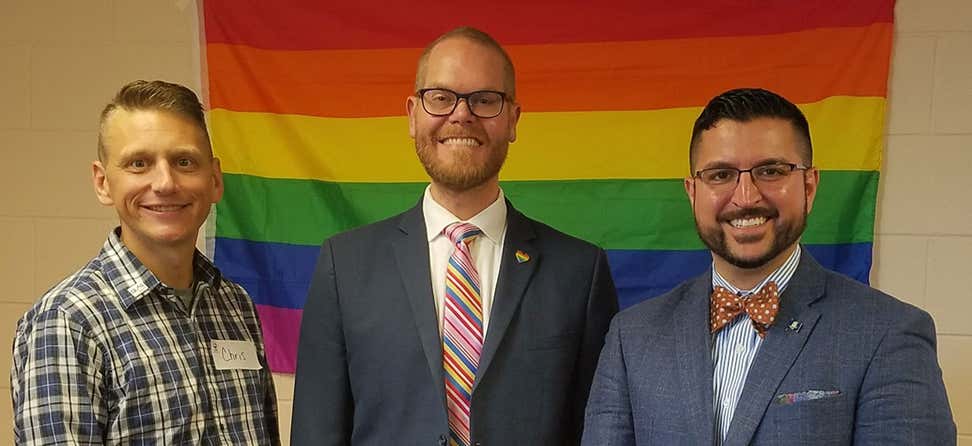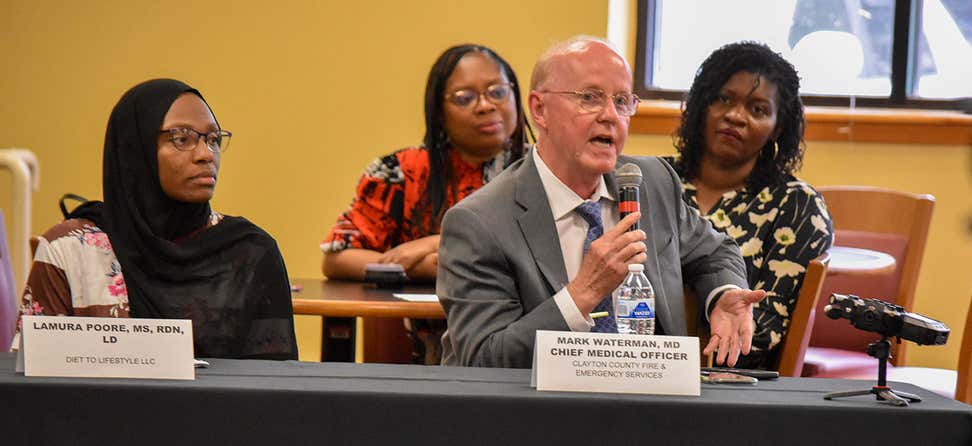Key Takeaways
Senior centers can be a valuable source of support for older adults who have mental health and substance use disorders but are not getting necessary services and treatment.
The Center for Aging and Disability Education and Research (CADER) at Boston University's Behavioral Health and Aging online certificate program is available at a discounted rate to empower senior center staff.
Senior centers can ensure participation in and sustainability of a behavioral health program by following such lessons learned as communicating the value of the program and measuring outcomes.
The nation’s 10,000+ senior centers are known in many towns and municipalities as the “go to” place for assistance. Often the community front door for social engagement and support services for older adults, families, and caregivers, senior centers also are where older adults can be identified as having or being at risk for having behavioral health concerns. It is critically important that the senior center workforce has the knowledge and skill to recognize the risks and is confident in their ability to make referrals to appropriate treatment providers.
Why is behavioral health a concern in older adults?
Older adults with untreated behavioral health concerns are a highly vulnerable population. Untreated mental health and substance use conditions are associated with a wide range of negative effects, including emotional distress, functional disability, reduced physical health, increased mortality, and suicide.1 Older adults with mental health concerns have greater disability rates, poorer health outcomes, and hospitalization rates and emergency room usage as much as 47% to 200% higher than older adults without these disorders.2
People with mental health disorders die at a younger age, with one study showing an average of 8.2 years earlier than the general population.3 A significant body of evidence shows that the majority of older adults who have mental health and substance use disorders do not get necessary services and treatment.4-9 In fact, older adults seek professional mental health treatment at a rate lower than any other adult age group.10 The number has been shown to be as low as 10% of community-living older adults receiving any mental health services.5
How can senior centers empower staff to help older adults with behavioral health concerns?
One of the greatest barriers to the provision of behavioral health services is the lack of a trained workforce. To address this barrier, the Center for Aging and Disability Education and Research (CADER) at Boston University created a Behavioral Health and Aging online certificate program, built around key competencies in geriatric behavioral health. (NISC Affiliate senior center staff can enroll in the program at a discounted rate).
Through this training program, CADER aims to focus on developing key competencies in the workforce employed at senior centers. CADER’s 19 hour online certificate in Behavioral Health and Aging consisted of five courses:
- Mental Health and Aging Issues
- Substance Use among Older Adults
- Mental Wellness and Resilience Among Older Immigrants and Refugees
- Suicide Prevention among Older Adults
- Alzheimer’s Disease and Other Dementias
There is limited information available on best practices in training senior center staff in behavioral health issues. Further, states do not mandate training or educational programs for senior centers in this area of practice; therefore, there is great variation across states and agencies in how to best impart important knowledge and skills in mental health, substance use, suicidality, and dementia.
To better understand the factors that contribute to the engagement in and sustainability of senior center staff in the BHA program, CADER and NCOA worked together to support the training of over 200 senior center staff members across three states. Focus groups were used to identify key strategies for recruiting senior center staff to take the program, ensuring program completion, and sustaining the program for future workforce training.
Lessons learned: Recruiting staff at senior centers
Among the takeaways when it comes to recruiting senior staff to take the behavioral health course:
- Communicate the value of the program. The BHA program offers valuable and practical strategies to identify and address behavioral health issues in older adults. Make it clear to staff that the BHA program addresses an important need by using national, state, and local statistics on behavioral and mental health conditions in older adults. Communicating to staff the purpose of the program and how it will enhance their ability to serve older adults can be a strong motivator to engage in the program.
- Work as a group. Working in cohorts can attract staff to participate in the program and offers the benefits of keeping on track, holding each other accountable, and having opportunities to discuss learnings. When possible, more than one staff member should take the BHA program at a time. Also, offering the program to disparate groups, from administrators, to staff, to volunteers, can create an environment that demonstrates the organization values its people and the importance of the content.
- Provide support. Staff are more likely to participate in the program when they have the support and encouragement from administrators and colleagues. Create excitement around the program and be available to answer questions and address hesitations about the program.
Lessons learned: Supporting senior center staff in completing the behavioral health program
Focus group participants from the three senior centers said staff completion of the behavioral health training could be bolstered paying attention to:
- Making time. The most important factor determining completion of the program was having the time to complete the coursework. Allowing staff to use time during the workday can address this challenge. Staff reported that having time at work to complete the program minimized distractions and increased motivation. Furthermore, when staff were able to use the computer room to work on the program in cohorts, they were more likely to complete the program.
- Design of the program. An advantage of the BHA program is that it is online and self-paced. Staff can start a course, save their work, and resume at another time, thus allowing for flexible learning experiences. The courses also include a mix of case studies, videos, and readings that complement various learning styles.
- Creating opportunities to share learnings. Allow space for staff to share new information learned from the program. Foster discussions about the content, including how to use it and reflecting upon its impact on older adults. Engaging in the content and about current behavioral and mental health issues in older adults on an on-going basis will allow staff to reflect upon their newly acquired skills and motivate them to act upon these skills in their daily work.
- Seeking new opportunities around behavioral health issues. Offer new programs and services to allow staff to practice their newly acquired skills. Encourage staff to identify new ways to address behavioral health issues and to be part of an overall effort to increase awareness prevention, and early treatment for behavioral and mental health conditions in older adults. Making staff part of the solution will encourage others to take the program and to learn more about how to best serve older adults.
How can senior centers sustain staff training in behavioral health?
Senior center staff suggested these sustainability tips:
- Integrate the work into your organization. Embed the BHA program as part of on-boarding for new staff and/or offer the program as a professional development opportunity. Continuing education units are earned for some professional licenses. For behavioral health services and programs, choose those that can be built into ongoing work. For example, embedding depression care into traditional care management can be a meaningful and practical service enhancement.
- Engage local partners such as area agencies on aging, community mental health centers, and community health centers. The advantages of partnerships and strategic collaboration should not be underestimated.
- Plan for sustainability from day one. Prepare clear strategies for gradual financial self-sufficiency. Pursue multiple and diverse financing sources. Approach potential funding sources early on and solicit feedback. Identifying funder needs early allows time to obtain data or change your approach. Also, expand the search. For example, if you are an area agency on aging, pursue behavioral health funding in addition to more familiar aging sources.
- Measure service outcomes from the outset. The most important factor to sustainability can be documented impact. To secure additional, long-term support, a potential funder will need evidence that the service is having positive client outcomes. Use data to make the funding case.
Find more resources on identifying and securing funding for behavioral health programs.11
Sources
1. National Academies Press. The Mental Health and Substance Use Workforce for Older Adults: In Whose Hands? Eden J, Maslow K, Le M, et al., editors. Committee on the Mental Health Workforce for Geriatric Populations; Board on Health Care Services; Institute of Medicine. July 2012. Found on the internet at https://nap.nationalacademies.org/catalog/13400/the-mental-health-and-substance-use-workforce-for-older-adults
2. Bartels SJ, Naslund JA. The underside of the silver tsunami--older adults and mental health care. New England Journal of Medicine. February 2013. Found on the internet at https://www.nejm.org/doi/10.1056/nejmp1211456
3. Druss, B., et al. Understanding excess mortality in persons with mental illness: 17-year follow up of a nationally representative US survey. Medical Care. June 2011. Found on the internet at https://pubmed.ncbi.nlm.nih.gov/21577183/
4. Dixon L, et al. Evidence-based practices for services to families of people with psychiatric disabilities. Psychiatric Services. July 2001. Found on the internet at https://ps.psychiatryonline.org/doi/pdf/10.1176/appi.ps.52.7.903
5. Karlin BE., Duffy M., Gleaves DH. Patterns and predictors of mental health service use and mental illness among older and younger adults in the United States. Psychological Services. 2008. Found on the internet at https://psycnet.apa.org/record/2008-11002-007
6. Klap R, Unroe KT, & Unutzer J. Caring for mental illness in the United States: A focus on older adults. American Journal of Geriatric Psychiatry. September-October 2003. Found on the internet at https://pubmed.ncbi.nlm.nih.gov/14506085/
7. Wang PS, et al. Recent care of common mental disorders in the United States: Prevalence and conformance with evidence-based recommendations. Journal of Genernal Internal Medicine. Found of the internet at https://pubmed.ncbi.nlm.nih.gov/10840263/
8. Wang PS, et al. Twelve-month use of mental health services in the United States: Results from the National Comorbidity Survey Replication. Archives of General Psychiatry. June 2005. Found on the internet at https://pubmed.ncbi.nlm.nih.gov/15939840/
9. World Health Organization. Mental health atlas 2017. Found on the internet at https://apps.who.int/iris/handle/10665/272735.
10. Bartels SJ, et al. Substance abuse and mental health among older Americans: The state of the knowledge and future directions. WESTAT. Aug. 11, 2005. Found on the internet at https://www.researchgate.net/publication/265450346_Substance_Abuse_and_Mental_Health_Among_Older_Americans_The_State_of_the_Knowledge_and_Future_Directions_Authors
11. McNeill AP, Watson EA. Lessons Learned on Sustainability of Older Adult Behavioral Health Services. 2011. National Council on Aging. Found on the internet at https://www.ncoa.org/article/lessons-learned-on-sustainability-of-older-adult-community-behavioral-health-services












